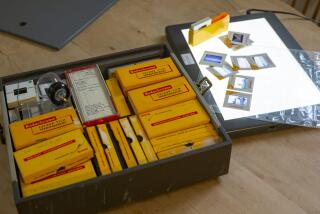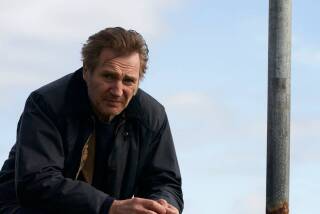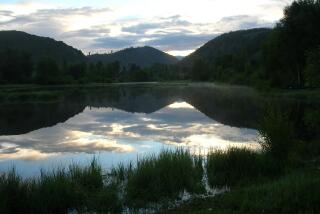Coming home to Ireland, a beautiful ruin
Every time I return to my native land, I begin, once again, to understand the function of memory.
This is the land I once walked across, from Dublin to Galway, in a nine-day rainstorm. This is the land where, as a child from the uncomplicated suburbs, I began to recognize the heft of violence. This is a land where light plays with shadow, a land of saints, scholars, schizophrenics.
Ireland is built on the wounds and the mercies of the past. Everywhere we are is everywhere we have once been. It is, nowadays, a beautiful ruin.
PHOTOS: G8 summit in Northern Ireland
Coming home — and although I live in New York, I still call Ireland home — I find my rib cage pried open and my heart rung out like an old dishrag. Gone is the tiny muddy path to my old school. Someone has built a glass tower on the patch of soil where we school kids used to fight. There’s a superhighway going through the old football field. Changed, changed, utterly changed.
But nostalgia is dangerous, of course.
The Ireland of my memory is, I hope, not just a romanticized thing. I lived it in the 1960s, the ‘70s, the ‘80s. I walked it. I cycled it. I loved it, but I hated it too — the cloying dreaminess, the lockdown mentality of the Roman Catholic Church. In 1986, at the age of 21, I left it behind.
While I was away, the country changed. What else did I expect? The change was gradual and often good. Europe lined our pockets. The poverty lessened. The potholes were filled. I enjoyed returning to Dublin two or three times a year.
And then, from the mid-1990s through to the mid-2000s, the Celtic Tiger began to purr and roar.
The Republic of Ireland became a country so jauntily happy with itself that it seemed nothing could go wrong. Midas developed a brogue. Bankers bellied up to the bar. Farmers put television screens in their tractor cabs. Taxi drivers became experts in hedge-fund investing.
By 2003, the Irish gross domestic product per capita had outstripped that of every European nation but Germany. Cranes swung like toy things across the skyline. Apartment buildings mushroomed into the countryside.
Coming home to Ireland, I felt like an impostor. Streets had changed. I could not find my way from the airport. People sniggered at the American accent of my children. The country seemed arrogant and unstoppable.
Each time I visited, Ireland seemed a more distant planet. Enlightened social legislation was dismantled. The robber barons moved in. There was stunned submission to greed. Even a beggar on O’Connell Street sneered if anything less than a euro was dropped in his hat.
The other narrative that ran alongside the Celtic Tiger during my absence was that of the peace process in Northern Ireland. I had spent many of my boyhood summers up north, on a farm in Derry, and I had seen, sometimes firsthand, the devastation that war could inflict on a country: the bomb craters, the funerals, the hunger strikes, the blown-off horse hooves dangling in the trees.
Then, in the early 1990s, the remarkable began to happen and a peace process began to unfold. Incredibly — despite
800 years of arterial bitterness — a peace agreement was negotiated and ratified in 1998, under the guidance of the American senator, George Mitchell. It quivered at times, but it held. Gone were the random murders in the docklands of Derry. Gone were the young girls on the streets of the Shankill who had been doused in tar and feathers for falling in love with the wrong boy. Gone were the hand-held mirrors slid under cars to check for explosives.
In the new century, peace began to bring a new color to Northern Ireland. Belfast felt like a city that had just run out into the fresh air. You could hear jazz coming from a tapas restaurant at the end of Botanic Avenue. In the countryside, the barbed wire was taken down from the checkpoints. Slowly the schools were becoming desegregated, old alliances torn down.
There are still, these days, issues of flags, riots, territorialism. And marching season still institutionalizes old hatreds. But Northern Ireland has, at its heart, changed dramatically.
It is the essence of human instinct to be able to hold opposing ideas at the exact same time. It is also a fundamental instinct to know that there is no absolute black, no absolute white, and that most of what we encounter in life is gray.
Sure, the Celtic Tiger hammered the vision of my Ireland. The year 2007 slid a malevolent knife into the financial system. The economy began collapsing. It has been in free fall ever since. There are now hundreds of empty buildings on the outskirts of Dublin. Ghost towns dot the countryside. The Irish pub is more or less gone. The scars of excess have become tragic.
But up north, the peace process holds. And there are signs now that the distances are dissolving, and that one day there will be no north, no south, just a proper Ireland to return to.
There are still plenty of places where the light still falls just right on the silvery waters, or where a stone wall snakes mysteriously through a field. There are still some country pubs where a fiddle comes out from beneath an overcoat late at night. And there is still the sense that life goes on in spite of hardship.
And so I keep on returning. I arrive at Dublin Airport’s Terminal Two three or four times a year, dragging my suitcase behind me. I rent a car. I consult the map to see where all the new highways lead. I look left and right, driving through the landscape of memory. It’s not a bad feeling, the ability to remember what we once were.
And it’s not a bad feeling to zoom on past either, and to leave that old self in the dust for another Ireland still yet to come.
Colum McCann is the author, most recently, of “Transatlantic.” His novel “Let the Great World Spin” won the National Book Award for fiction.
More to Read
A cure for the common opinion
Get thought-provoking perspectives with our weekly newsletter.
You may occasionally receive promotional content from the Los Angeles Times.






